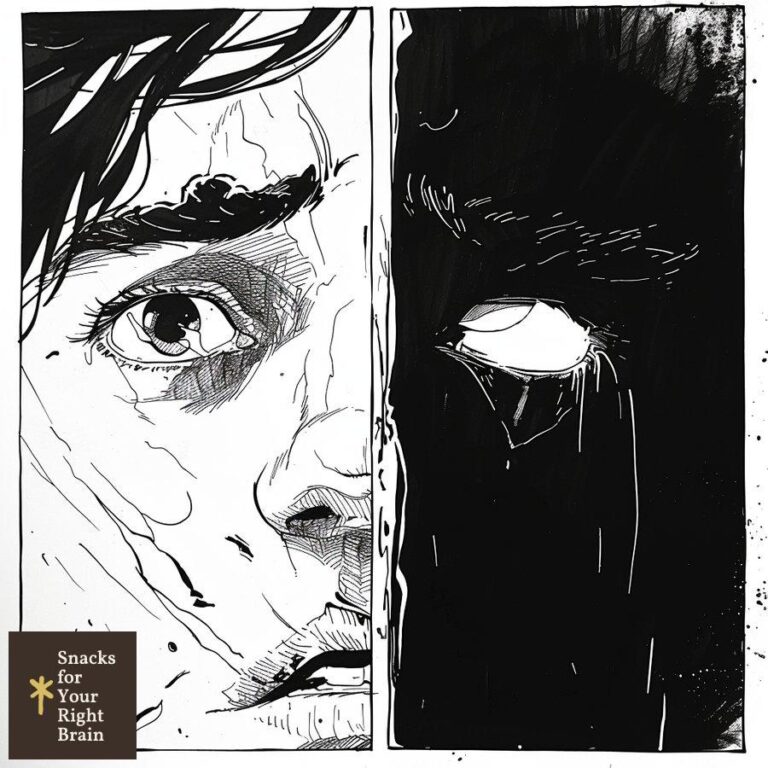How Does a Story Change When the Point of View Changes
What is point of view in fiction?
Point of view (POV) in fiction refers to the perspective from which a story is narrated. It encompasses the narrator’s position relative to the story being told, influencing how readers perceive events, characters, and themes. The choice of POV shapes the narrative’s intimacy, reliability, and emotional depth, ultimately guiding the reader’s journey through the text.
-
First-person point of view involves a narrator who is a character in the story, using “I” or “we” pronouns. This perspective provides direct insight into the narrator’s thoughts and feelings, creating a personal connection with the reader.
-
Second-person point of view addresses the reader directly using “you.” This rare perspective can create an immersive experience, making the reader feel as if they are part of the story.
-
Third-person point of view employs “he,” “she,” or “they” pronouns. It can be further divided into:
- Third-person limited, where the narrator knows the thoughts and feelings of one character.
- Third-person omniscient, where the narrator knows the thoughts and feelings of all characters.
The choice of POV not only dictates the narrative style but also influences the emotional resonance of the story. Each perspective offers unique advantages and limitations, affecting how readers engage with the narrative.
How does point of view affect character development?

Character development is deeply intertwined with the chosen point of view. The perspective from which a story is told can significantly shape how characters are portrayed and understood by the reader.
-
First-person POV allows for deep exploration of a character’s inner thoughts, motivations, and conflicts. Readers gain firsthand insight into the character’s experiences, fostering empathy and connection. For example, in The Catcher in the Rye by J.D. Salinger, Holden Caulfield’s narrative voice reveals his vulnerabilities and complexities, making him a relatable and memorable character.
-
Third-person limited POV provides insights into a single character while maintaining some narrative distance. This method allows for a more objective view of the character’s actions and decisions, while still revealing their internal struggles. In Harry Potter and the Sorcerer’s Stone by J.K. Rowling, the story primarily follows Harry’s perspective, allowing readers to experience his growth and challenges while also observing the world around him.
-
Third-person omniscient POV offers a broader view of multiple characters, allowing for a more comprehensive understanding of their motivations and relationships. This perspective can create a richer tapestry of character interactions, as seen in Pride and Prejudice by Jane Austen, where the narrator provides insights into the thoughts and feelings of various characters, enhancing the complexity of their relationships.
The impact of POV on character development is profound. It shapes how readers perceive characters, influencing their emotional investment and understanding of the narrative.
In what ways does changing the point of view shift narrative focus?
Changing the point of view can dramatically alter the narrative focus, shifting the emphasis from one aspect of the story to another. This shift can affect the reader’s understanding of events, themes, and character dynamics.
-
Shifting from first-person to third-person can broaden the narrative scope. For instance, if a story begins with a first-person perspective, focusing on a single character’s experiences, transitioning to a third-person viewpoint can provide insights into other characters’ thoughts and motivations. This change can enrich the narrative by revealing hidden tensions or conflicts that the initial narrator may not have been aware of.
-
Changing from third-person limited to omniscient allows for a more nuanced exploration of the story’s themes. An omniscient narrator can weave together multiple character arcs, highlighting how their individual journeys intersect. This approach can create a more complex narrative structure, as seen in A Game of Thrones by George R.R. Martin, where shifting perspectives reveal the intricacies of political intrigue and personal ambition.
-
Switching to second-person POV can create a sense of immediacy and urgency. This perspective draws the reader into the narrative, making them an active participant in the story. For example, in Choose Your Own Adventure books, the second-person perspective allows readers to make choices that influence the outcome, shifting the focus to their agency within the narrative.
The way a story is told can significantly impact its focus, guiding readers’ attention and shaping their interpretations of the narrative.
How does point of view alter the reader’s experience?
The reader’s experience is profoundly influenced by the chosen point of view. Each perspective offers distinct emotional and cognitive engagements, shaping how the story resonates with the audience.
-
First-person POV creates an intimate connection between the narrator and the reader. This closeness allows readers to experience the narrator’s emotions and thoughts directly, fostering empathy. However, this perspective can also limit the reader’s understanding of the broader context, as they only see the world through the narrator’s lens.
-
Third-person limited POV strikes a balance between intimacy and objectivity. Readers gain insight into a character’s inner world while still observing the external events of the story. This duality can enhance the emotional impact of key moments, as readers understand both the character’s feelings and the consequences of their actions.
-
Third-person omniscient POV provides a panoramic view of the narrative, allowing readers to grasp the complexities of multiple characters and their relationships. This perspective can enrich the reading experience by revealing themes and connections that may not be apparent from a single character’s viewpoint.
-
Second-person POV offers a unique and immersive experience, as it places the reader directly in the narrative. This approach can create a sense of urgency and involvement, as readers navigate the story as active participants. However, this perspective can also be disorienting if not executed well, potentially alienating some readers.
Ultimately, the choice of point of view shapes the reader’s emotional engagement, influencing how they connect with the story and its characters.
What impact does point of view have on themes and symbolism?
Point of view plays a critical role in shaping themes and symbolism within a narrative. The chosen perspective can highlight specific themes, enhance symbolic meanings, and guide the reader’s interpretation of the story.
-
First-person POV often emphasizes personal themes, such as identity, memory, and perception. The narrator’s subjective experiences can illuminate the complexities of these themes, as seen in The Bell Jar by Sylvia Plath. The protagonist’s internal struggles and reflections provide a deep exploration of mental health and societal expectations.
-
Third-person limited POV can focus on themes of isolation or connection. By revealing a single character’s thoughts and feelings, the narrative can explore how that character relates to others and the world around them. In The Great Gatsby by F. Scott Fitzgerald, the limited perspective of Nick Carraway allows readers to understand Gatsby’s dreams and disillusionment, emphasizing themes of aspiration and the American Dream.
-
Third-person omniscient POV enables a multifaceted exploration of themes, as the narrator can delve into the thoughts and motivations of various characters. This approach can reveal the interconnectedness of themes, such as love, betrayal, and redemption. In The Lord of the Rings by J.R.R. Tolkien, the omniscient perspective allows for a rich exploration of the themes of friendship and sacrifice across multiple character arcs.
-
Second-person POV can create a unique thematic experience, often emphasizing themes of choice and agency. This perspective invites readers to reflect on their own decisions and experiences, as seen in If on a winter’s night a traveler by Italo Calvino, where the narrative directly engages the reader in a discussion about storytelling and reader involvement.
The impact of point of view on themes and symbolism is profound, shaping how readers interpret and engage with the narrative’s deeper meanings.
What technical considerations arise when changing point of view?
Changing point of view involves several technical considerations that writers must navigate to maintain coherence and clarity in their narratives. These considerations include:
-
Consistency: Maintaining a consistent point of view throughout a story is crucial. Sudden shifts can confuse readers and disrupt the narrative flow. Writers should establish clear transitions when changing POV, ensuring that readers can follow the shifts without losing track of the story.

-
Narrative voice: Each point of view has its own distinct voice and tone. Writers must adapt their language and style to fit the chosen perspective. For instance, a first-person narrator may use informal language and personal anecdotes, while a third-person omniscient narrator may adopt a more formal tone.
-
Character development: When changing POV, writers must consider how this shift affects character development. Each perspective offers different insights into characters’ thoughts and motivations, influencing how readers perceive them. Writers should ensure that character arcs remain consistent and believable across different points of view.
-
Plot structure: The choice of POV can impact the plot’s structure and pacing. Writers should consider how different perspectives affect the unfolding of events and the revelation of key information. For example, a third-person omniscient narrator can foreshadow events and create dramatic irony, while a first-person narrator may withhold information to build suspense.
-
Reader engagement: Writers should consider how changes in POV affect reader engagement. Each perspective offers unique opportunities for connection and immersion. Writers must ensure that shifts in POV enhance the reader’s experience rather than detract from it.
Navigating these technical considerations is essential for writers seeking to change point of view effectively while maintaining a cohesive and engaging narrative.
How can famous stories illustrate the effects of different points of view?
Famous stories often serve as excellent examples of how different points of view can shape narratives, character development, and thematic depth. Analyzing these works can provide valuable insights for writers.

-
To Kill a Mockingbird by Harper Lee: This novel is narrated by Scout Finch, a young girl whose first-person perspective offers a unique lens on themes of racism and moral growth. The innocence of her voice contrasts sharply with the harsh realities of the adult world, creating a poignant exploration of social injustice.
-
The Sound and the Fury by William Faulkner: This novel employs multiple points of view, including first-person and third-person perspectives, to depict the decline of the Compson family. The fragmented narrative structure reflects the characters’ disintegration, illustrating how POV can enhance themes of memory and loss.
-
The Handmaid’s Tale by Margaret Atwood: The first-person perspective of Offred allows readers to experience the oppressive regime of Gilead intimately. This choice enhances the emotional impact of the story, as readers witness Offred’s struggles and desires firsthand.
-
The Book Thief by Markus Zusak: This novel features a unique narrative voice as Death serves as the omniscient narrator. This unconventional choice allows for a broader exploration of themes such as mortality and the power of words, demonstrating how POV can shape thematic depth.
These examples highlight the diverse effects of point of view on storytelling, illustrating how different perspectives can enhance character development, theme exploration, and reader engagement.
What factors should be considered when choosing a point of view?
Choosing the appropriate point of view for a story involves careful consideration of several factors that can influence the narrative’s effectiveness and resonance.

-
Story type: The nature of the story often dictates the most suitable POV. For instance, a deeply personal narrative may benefit from a first-person perspective, while a complex, multi-character plot might be better suited for a third-person omniscient viewpoint.
-
Character depth: Writers should consider how much insight they want readers to have into characters’ thoughts and motivations. A first-person POV can provide intimate access to a character’s inner world, while a third-person limited perspective can balance character depth with narrative distance.
-
Themes and messages: The themes of the story can also influence the choice of POV. Certain themes may resonate more strongly with specific perspectives. For example, themes of isolation may be more effectively conveyed through a first-person narrative, while themes of interconnectedness may benefit from an omniscient viewpoint.
-
Reader engagement: Writers should think about how the chosen POV will affect reader engagement. A first-person perspective can create a strong emotional connection, while a third-person omniscient viewpoint can offer a broader understanding of the narrative’s complexities.
-
Narrative style: The overall style and tone of the story should align with the chosen POV. Writers should consider how the narrative voice will reflect the story’s mood and atmosphere, ensuring consistency throughout the text.
These factors play a crucial role in determining the most effective point of view for a story, guiding writers in their decision-making process.
How can writers avoid common pitfalls when changing point of view?
Changing point of view can present challenges for writers, but several strategies can help avoid common pitfalls associated with this narrative technique.
-
Establish clear transitions: When shifting POV, writers should use clear transitions to signal the change to readers. This can be achieved through chapter breaks, section breaks, or explicit cues within the text. Clear transitions help maintain narrative coherence and prevent confusion.
-
Maintain character consistency: Writers must ensure that character development remains consistent across different points of view. Each perspective should reflect the character’s voice, motivations, and emotional state. Inconsistencies can lead to reader disengagement and confusion.
-
Avoid overloading with information: When changing POV, writers should avoid overwhelming readers with excessive information. Each perspective should reveal only what is necessary for the narrative, maintaining a sense of mystery and intrigue.
-
Be mindful of tone and style: Different points of view require distinct narrative voices. Writers should adapt their language and tone to fit the chosen perspective, ensuring that the narrative remains cohesive and engaging.
-
Test reader reactions: Sharing drafts with beta readers can provide valuable feedback on the effectiveness of POV changes. Writers can gauge reader reactions and adjust their approach based on feedback, ensuring that shifts in perspective enhance rather than detract from the story.
Implementing these strategies can help writers navigate the complexities of changing point of view while maintaining a compelling and coherent narrative.
What exercises can help writers experiment with different points of view?
Experimenting with different points of view can enhance a writer’s understanding of narrative techniques and deepen their storytelling skills. Here are several exercises to facilitate this exploration:
-
Rewrite a scene: Take a scene from a favorite story and rewrite it from a different point of view. For example, if the original scene is in first-person, try rewriting it in third-person limited or omniscient. This exercise encourages writers to consider how perspective affects character development and narrative focus.
-
Character monologues: Write a monologue from the perspective of a secondary character in a story. This exercise helps writers explore how different characters perceive events and interact with the protagonist, enhancing their understanding of character dynamics.
-
Point of view shifts: Write a short story that shifts between multiple points of view. This exercise allows writers to practice establishing clear transitions and maintaining narrative coherence while exploring different perspectives.
-
Second-person narrative: Write a scene using second-person point of view. This exercise challenges writers to engage readers directly and consider how this perspective alters the narrative experience.
-
Dialogue-focused scenes: Create a scene that relies heavily on dialogue between characters, then rewrite it from the perspective of one character. This exercise emphasizes how POV can influence the interpretation of dialogue and character relationships.
These exercises can help writers become more versatile in their storytelling, allowing them to experiment with different points of view and understand their effects on narrative structure and character development.






